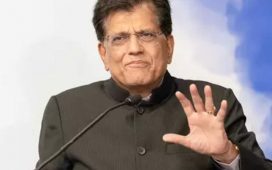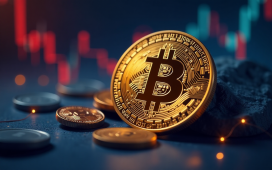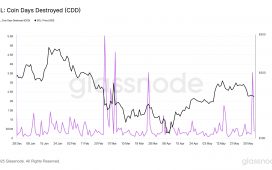Back then, political scientists weren’t using “stochastic” to describe Trump’s meandering speech patterns, which have only become more disjointed and fantastical. They were talking about the violence that he generates, randomly yet also certainly.
Violence and Trump are inextricable. After Trump and MAGA propagandist Elon Musk spewed lies about the Federal Emergency Management Agency in the wake of Hurricane Helene, threats and harassment prompted FEMA temporarily to withdraw field teams in North Carolina while the agency assessed the danger to its personnel. A man possessing a handgun and rifle was arrested outside a grocery store that was being used as a relief site. He was charged with a misdemeanor — going armed to the terror of the public. “We know that significant misinformation online contributes to threats against response workers on the ground,” North Carolina Governor Roy Cooper said in a statement.
The terror of the public has been as essential to Trump’s political identity and MAGA movement as resentment at the rising social status of women and racial minorities. The appeal to violence is inherent in his message even when Trump refrains from making it overt. His lies about Haitian immigrants in Ohio, for example, a buffet of racist falsehoods on which Trump’s running mate, JD Vance, also gorged himself, led to more than 33 bomb threats in Springfield, Ohio. Schools were shuttered. Residents are still on edge.
This week, Trump proposed unleashing state violence — the National Guard or US military — against domestic political opponents, whom he described as “scum” and enemies far more dangerous than the anti-American dictators and Trump idols in Beijing, Moscow and Pyongyang.
“I’ve refrained from describing Trump as a fascist until now, but there’s no other way to describe the last few weeks of his campaign,” said Dartmouth College political scientist Brendan Nyhan, a co-director of Bright Line, a research organization that monitors threats to democratic norms and practices. “The wolf is at the door.”In a large-sample national survey released by Bright Line on Thursday, more than eight in 10 Republicans endorsed Trump’s false claim, echoed by other Republican leaders, that Democrats are permitting unauthorized immigrants into the country to vote. It’s the sort of evidence-free claim likely to incite the MAGA base, the same cohort that attacked the US Capitol in 2021 without a shred of evidence informing their rage.The disjointed nature of the violence — shots fired repeatedly at a Harris-Walz campaign office in Arizona, a deranged gunman shooting at Trump in Pennsylvania, election officials being menaced in locales nationwide — makes it more difficult for either the news media or casual consumers of political information to plot the threats on a partisan or even logical graph. “These incidents are not confined to one part of the country and the extent to which they are linked to local dynamics — the hurricane disaster in the Southeast, the incidents in Arizona, the localized nature of election administration — makes it possible for much of the country to miss any one incident, and makes it difficult to make any single incident a major media event,” Marquette University political scientist Julia Azari said.
Yet the connective tissue is hardly a mystery. A study in 2018 found a measurable increase in local assaults when a city hosted a Trump rally. Targets of MAGA propaganda, a list that ranges far beyond politicians and public activists to meteorologists, business owners, nonpartisan election administrators and librarians, seem invariably to receive death threats.
Republican leaders, of course, surrendered to the mob. “The people who have the power to reduce violence and violent language are people within the Republican Party,” Johns Hopkins University political scientist Lilliana Mason said. “But people who stand up against Trump are often threatened with violence themselves.”
Trump’s personal pathologies are now Republican pathologies. Given the broad reach of the GOP, Republican pathologies have necessarily become American pathologies. “There’s a thrill in transgression,” Mason said.
That litany, of course, also works as a loose description of authoritarian will to power: An undemocratic faction imposes its will, by intimidation and force, and its alternate reality, via propaganda, on a national population. When you mix the cultish, overlapping beliefs of MAGA, Q-Anon and Christian nationalism, the potential for harm compounds.
This year, Mason and colleagues have been surveying a panel of 2,000 voters. Like other surveys, their research shows that Republicans who acknowledge that the 2020 election wasn’t fraudulent inhabit, more or less, the same reality-based environment as most Democrats and independents. The MAGA faction that can’t accept election reality is a distinct bloc. “The election-denier Republicans, half of them say they strongly agree that people in the other party are ‘evil’ — the Democrats are evil,” Mason said. “And there’s no other group that looks like that. The other Republicans don’t do that. Democrats don’t do that. It’s a completely unique effect in the electorate. That likely goes along with the rhetoric that they constantly hear that Democrats are the bad guys, they’re bad for the country, they’re evil, and they’re going to change your entire way of life, and, therefore, violence is OK against them.”
A Trump summons to violence on Jan. 6, 2021, produced an unprecedented attack on American democracy. Four years of MAGA lies and rage, accompanied by widespread institutional failure, have followed. With early voting in the 2024 election under way, we can only hope that people who wish harm on others will exercise restraint even as Trump excites their most primal fears.
Mason said that the MAGA voters in her survey panel are also distinct in their high expectations of violence connected to the 2024 election. We don’t have to wonder where they got that idea. We just have to bolster our citizenry, and our democratic institutions, to counter it.











